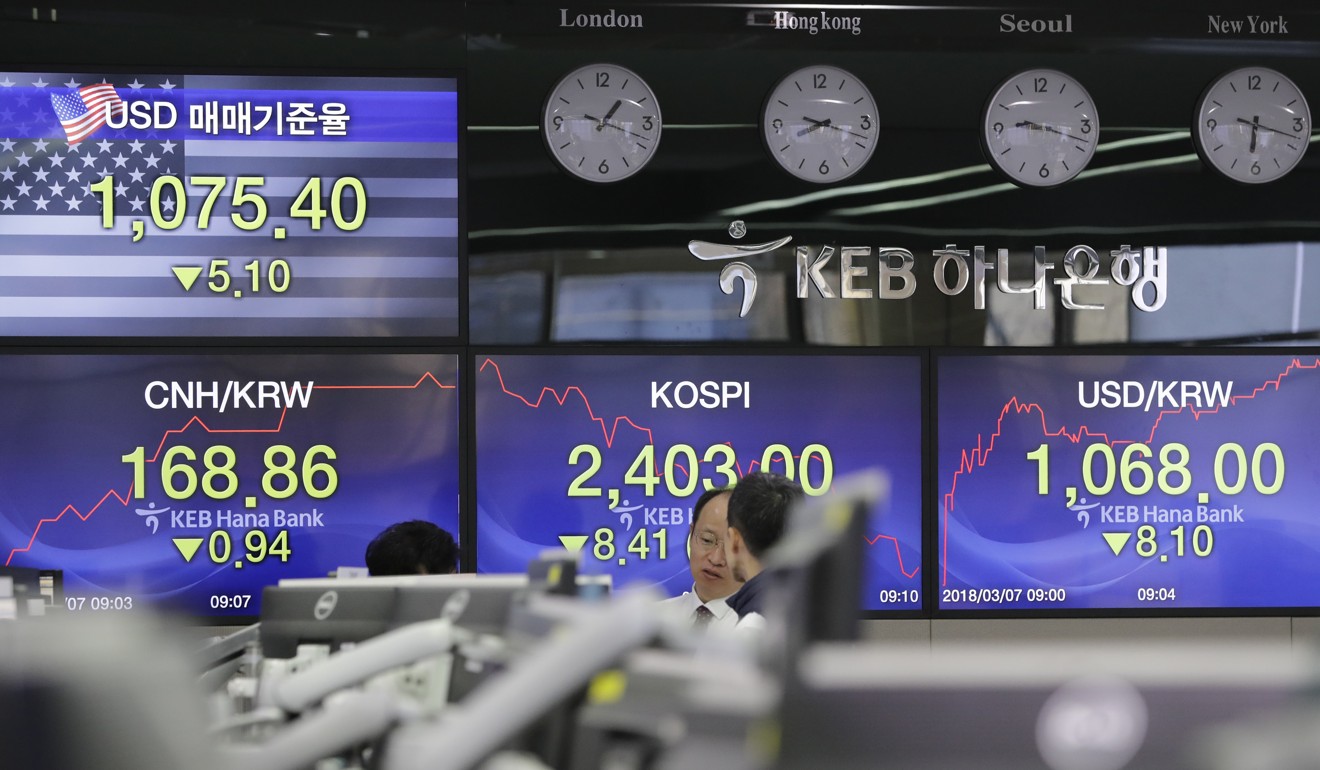
Why the US-China trade war could turn the heat on the Korean won and Australian dollar next
Neal Kimberley says an intensification of the US-China trade war, combined with Federal Reserve monetary tightening, could be double trouble for currencies in the Asian region
There’s a strong possibility that Trump is overestimating China’s economic discomfiture.
“We used a mathematical model to calculate the negative impact of the trade war,” former People’s Bank of China governor Zhou Xiaochuan told CNBC earlier this month. “It is not very large, it is not significant. It is less than half a per cent [of an] impact to the Chinese economy.”
On Friday, while acknowledging that “August activity data was a little mixed”, HSBC Hong Kong’s Julia Wang wrote that “on [a] positive note, it does not look as if either trade war rhetoric or tariffs have had much impact on China’s manufacturing sector.”
But what might that mean for currencies?

In its currency outlook for September, HSBC noted how current account surplus currencies in Asia, notably the Korean won, the Singapore dollar, the Thai baht and the Taiwan dollar, “have been resilient through the external headwinds, given their strong fundamentals and partly anchored by China’s policy support for the renminbi and a temporary lull in US-Sino trade tensions”.
US firm Goldman Sachs argued on September 6 that there are three main channels through which tariffs on China can affect foreign exchange markets: “by lowering expectations for Chinese growth”; “by causing a general decline in risk tolerance and therefore weakness in riskier currencies”; and, “by weakening the Chinese yuan relative to the US dollar.”
It is Goldman’s view that the Korean won is susceptible to all three factors and “that investors concerned about a worse-than-expected outcome for the US-China trade disputes” should buy US dollars versus the won.

Meanwhile, in such a scenario, the Japanese yen might outperform other currencies in the area. The US firm feels that the fall in risk tolerance, deriving from a further worsening in US-China trade relations, could trigger “safe-haven” demand for the yen that would offset any tendency for Japan’s currency to weaken if the yuan did.
Fed tightening and a US-China trade war arguably spell double trouble for emerging market currencies in Asia and more widely
In fact, buying the yen against the won “would likely be the cleanest tail risk hedge consistent with our views”, Goldman wrote in its research note.
Fed tightening and a US-China trade war arguably spell double trouble for emerging market currencies in Asia and more widely.
“Rising trade protectionism suggests emerging market investors will turn more cautious, meaning less capital flowing into emerging markets,” US bank Morgan Stanley wrote on Thursday. “The Fed has been spearheading increasing developed market central bank hawkishness, pushing US dollar funding costs up and further reducing the attractiveness of deploying capital into emerging markets.”
The Australian dollar could also come under renewed pressure. Often regarded by currency market participants as a proxy play on China, due to the close economic ties between the two countries, the Australian dollar could be doubly vulnerable in the face of rising US dollar funding costs, given that Australia might find it harder to attract capital inflows to fund its current account deficit.
Even a trade agreement between China and the US might have a downside for Australia. “While a US-China trade deal would be positive for the Australian dollar, as it would avert a trade war, there is a risk that this deal could lead to the US eating into Australia’s exports to China,” French bank Credit Agricole wrote on Friday.
It’s not inevitable that the US-China trade war will drag on interminably, or keep escalating, but such an outcome seems increasingly likely. The currency market has to be prepared for such an eventuality. There will be money to be made and lost.
Neal Kimberley is a commentator on macroeconomics and financial markets

